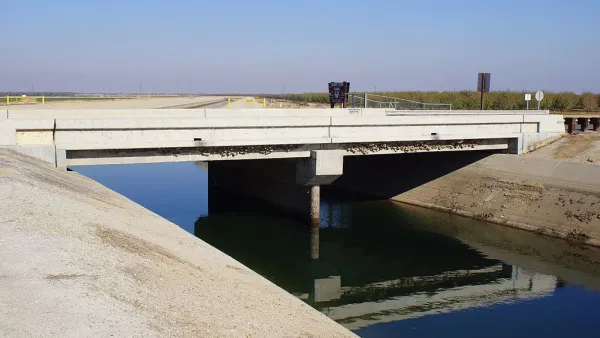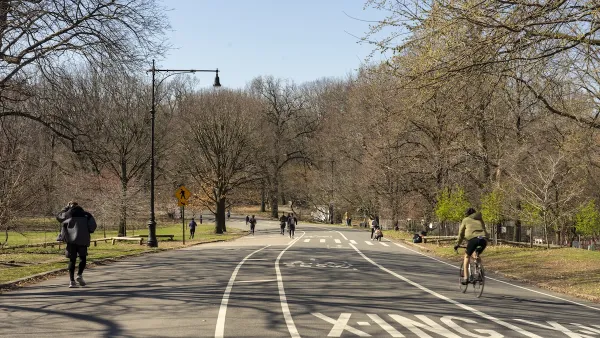It should come as no surprise that Eduardo Porter, who writes the Economic Scene column for The New York Times, is not enamoured by technological silver bullets like desalination as ways for California to survive it's four-year plus drought.
California’s main challenge is not technological, but economic and political," writes Eduardo Porter. "One thing to keep in mind is that the state still has plenty of water. It just doesn’t have enough for every possible use, no matter how inefficient and wasteful."
However, he does list some of the innovations mentioned by the former state secretary of food and agriculture, Mr. A.G. Kawamura, used to reduce and replenish water supplies:
- Irrigation systems have evolved from furrows to sprinklers to drips in the three generations since his family began farming in what is now the highly urbanized Los Angeles basin.
- These days, he said, there’s a water district experimenting with human waste, extracting methane and hydrogen to use for fuel and injecting the water into the aquifer.
- Australians have developed a technique to irrigate with brackish water, using the brine as fertilizer and cleaning out the water for use on site.
- He also sees promise in techniques to harvest water from the air.
Porto is critical of Gov. Jerry Brown's decision "to exempt farmers from California’s first restrictions ever on water use, even though they consume some 80 percent of the surface water used in the state." It "underscores the scale of the political challenge," he writes.
But he's critical of urban and suburban water users as well—pointing to their over-consumption compared to other areas.
California’s cities consume 178 gallons per person per day, on average. That’s 40 percent more than the per capita water consumption in New York City and more than double that of parched Sydney, in Australia.
Porto goes on to discuss the role of of climate change, not as the cause of the drought, but how it will impact water supplies "in the not-so-distant future," citing two recent studies.
His warning to those believing in 'silver bullets'—"the risk is that belief in our technological capabilities to adapt to whatever comes our way might get in the way of a more comprehensive response."
Hat tip to Michael Keenly.
FULL STORY: In Parched California, Innovation, Like Water, Has Limits

Analysis: Cybertruck Fatality Rate Far Exceeds That of Ford Pinto
The Tesla Cybertruck was recalled seven times last year.

National Parks Layoffs Will Cause Communities to Lose Billions
Thousands of essential park workers were laid off this week, just before the busy spring break season.

Retro-silient?: America’s First “Eco-burb,” The Woodlands Turns 50
A master-planned community north of Houston offers lessons on green infrastructure and resilient design, but falls short of its founder’s lofty affordability and walkability goals.

Test News Post 1
This is a summary

Analysis: Cybertruck Fatality Rate Far Exceeds That of Ford Pinto
The Tesla Cybertruck was recalled seven times last year.

Test News Headline 46
Test for the image on the front page.
Urban Design for Planners 1: Software Tools
This six-course series explores essential urban design concepts using open source software and equips planners with the tools they need to participate fully in the urban design process.
Planning for Universal Design
Learn the tools for implementing Universal Design in planning regulations.
EMC Planning Group, Inc.
Planetizen
Planetizen
Mpact (formerly Rail~Volution)
Great Falls Development Authority, Inc.
HUDs Office of Policy Development and Research
NYU Wagner Graduate School of Public Service



























